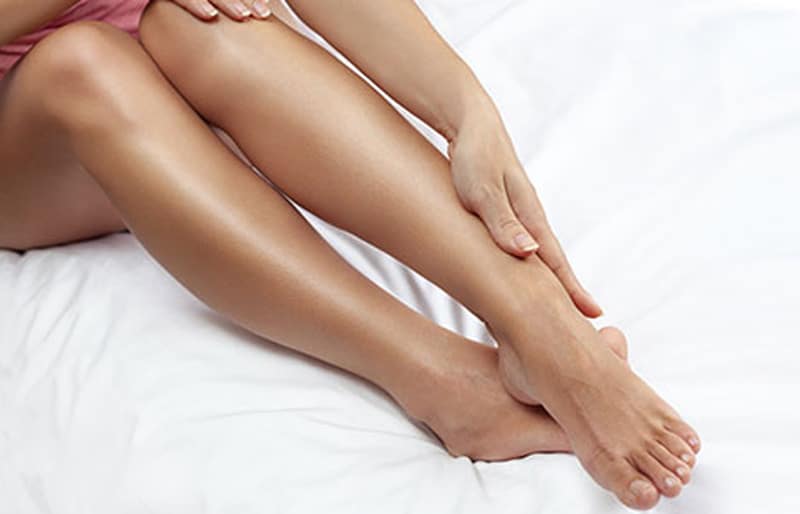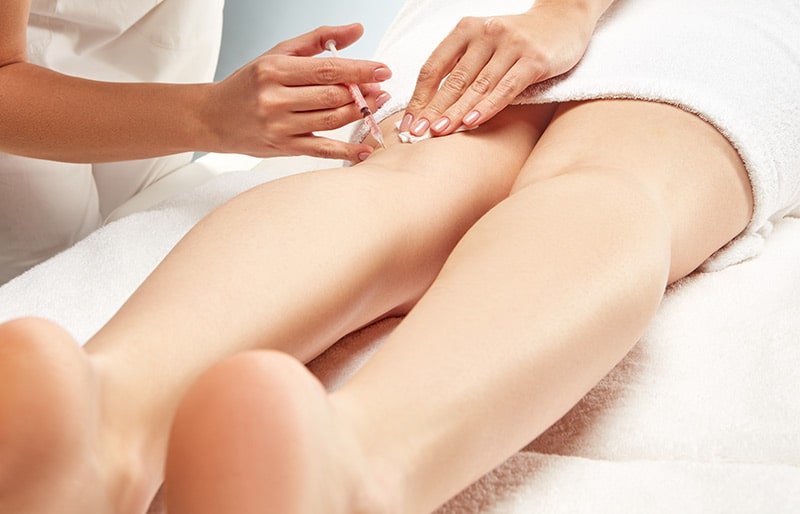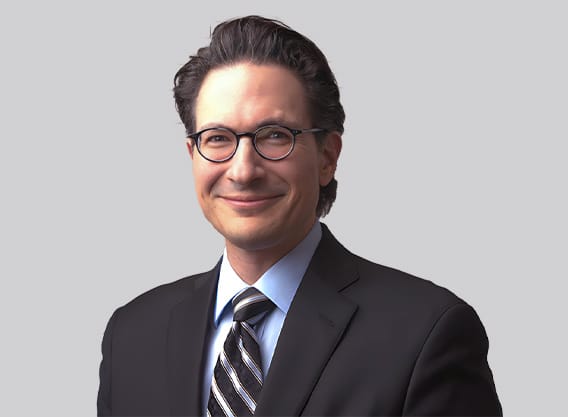If varicose and/or spider veins on your legs are making you self-conscious or uncomfortable, rest assured that you don’t have to live with them forever. The solution is a safe, minimally invasive procedure known as sclerotherapy, which can reduce the appearance of these veins. It works by naturally rerouting blood flow to the surrounding healthy veins. At Premier Image Cosmetic and Laser Surgery, we are pleased to offer sclerotherapy to patients in the Atlanta area. Premier Image has performed countless successful sclerotherapy procedures and can help you improve the appearance of unsightly veins for improved aesthetics and confidence.

Understanding Varicose and Spider Veins
Varicose veins are enlarged, swollen veins that are usually caused by damaged or faulty valves that permit blood to travel in the wrong direction. They often lead to pain, itching, cramping, and discoloration. Although anyone may get varicose veins, they are more common in women than in men.
Spider veins are smaller and not as serious as varicose veins. They are usually light purple in color and caused by increased pressure in the veins. Spider veins often make men and women alike feel insecure about their appearance. These veins can also appear on the face, as well as on the legs.

How Sclerotherapy Works
Sclerotherapy is a type of chemical ablation that works by injecting a sclerosing solution into a problematic vein. The solution destroys the vein wall and causes the vein to collapse and shut down.
The process involves injections of a sclerosant (Asclera®), using a micro needle, into the spider vein. With patience and time (typically involving two or more treatments) the sclerosant causes changes in the wall of the vein, causing it to harden (“sclerose”), shut down and fade from view.
By irritating the cells that line the blood vessels, sclerotherapy allows the vessels to fade over a two to four week time frame. In two to four half hour sessions, Premier Image can usually fade the majority of if not all of a patient’s varicose and/or spider veins.

Good Candidates for Sclerotherapy
Men and women who are between the ages of 30 and 60 and bothered by varicose and/or spider veins are good candidates for sclerotherapy. They should have realistic expectations, be able to adhere to pre- and post-procedure instructions, and understand that the procedure will not prevent the formation of new veins.
Patients who are over 75 years of age, lead a very sedentary lifestyle, or are pregnant should avoid this procedure. Sclerotherapy is also a poor option for patients with clotting issues or those who have recently had a vein infection, fever, or acute illness.
Preparing for Sclerotherapy
Patients who are interested in sclerotherapy are encouraged to schedule a private consultation with Premier Image. During the consultation, he will go over the procedure and determine whether a patient could benefit from sclerotherapy.
Once a sclerotherapy session is scheduled, the doctor may recommend that the patient purchase Arnica gel and apply it to the treatment areas three days prior to their session. Arnica gel is a natural anti-inflammatory product and may help reduce irritation that can occur after a sclerotherapy injection.
Premier Image may also suggest that a patient refrains from applying any type of cream, lotion, or self-tanner to the treatment areas the night prior to their session. Patients will also be encouraged to avoid taking any blood thinning medications three days before the procedure, if possible.
Patient Reviews
How Sclerotherapy is Performed
Fortunately, sclerotherapy is a simple procedure that is relatively pain-free and can be performed without anesthesia. While the number of veins being treated in a session determines how long the procedure will take, most sessions are completed in 15 minutes to an hour.
The doctor will begin by sterilizing the injection site and asking the patient to lie on their back with their legs elevated. He will then use a small needle to inject the chemicals directly into the vein. The chemical will irritate the lining of the cell, cause inflammation and scarring of the vein wall, and close the vein as a result. In the event there are multiple veins that need to be treated in a single session, we will treat the larger veins first.
Recovering From Sclerotherapy
After a sclerotherapy procedure, a patient may notice red or swollen joints. This is normal and shows that the solution is working. The doctor will apply gauze to the injection sites and ask the patient to wear compression garments so that they can help collapse the treated veins and begin to heal.
The compression garments are important because they help reduce the risk of blood trapping in the problem veins. They also allow scarring to occur by keeping the vein walls intact. A patient can expect to wear a compression garment for approximately a week after the procedure.
Premier Image will recommend mild exercises such as walking to help a patient keep their blood circulating. In most cases, patients who have undergone sclerotherapy return to work and resume their everyday activities on the same day as the procedure. A follow-up visit with your doctor is typically scheduled a week or two after sclerotherapy has been completed.
Why Choose Premier Image Cosmetic and Laser Surgery
Premier Image Cosmetic and Laser Surgery have been performing sclerotherapy, the gold standard for vein removal for years. Our doctors are experts at this procedure and take great pride in helping patients fade their unwanted veins.
If you schedule a sclerotherapy treatment at our office, you can expect Premier Image Cosmetic and Laser Surgery to design a treatment plan that is unique to your condition and goals. We will work with you to ensure that your veins disappear as quickly as possible.